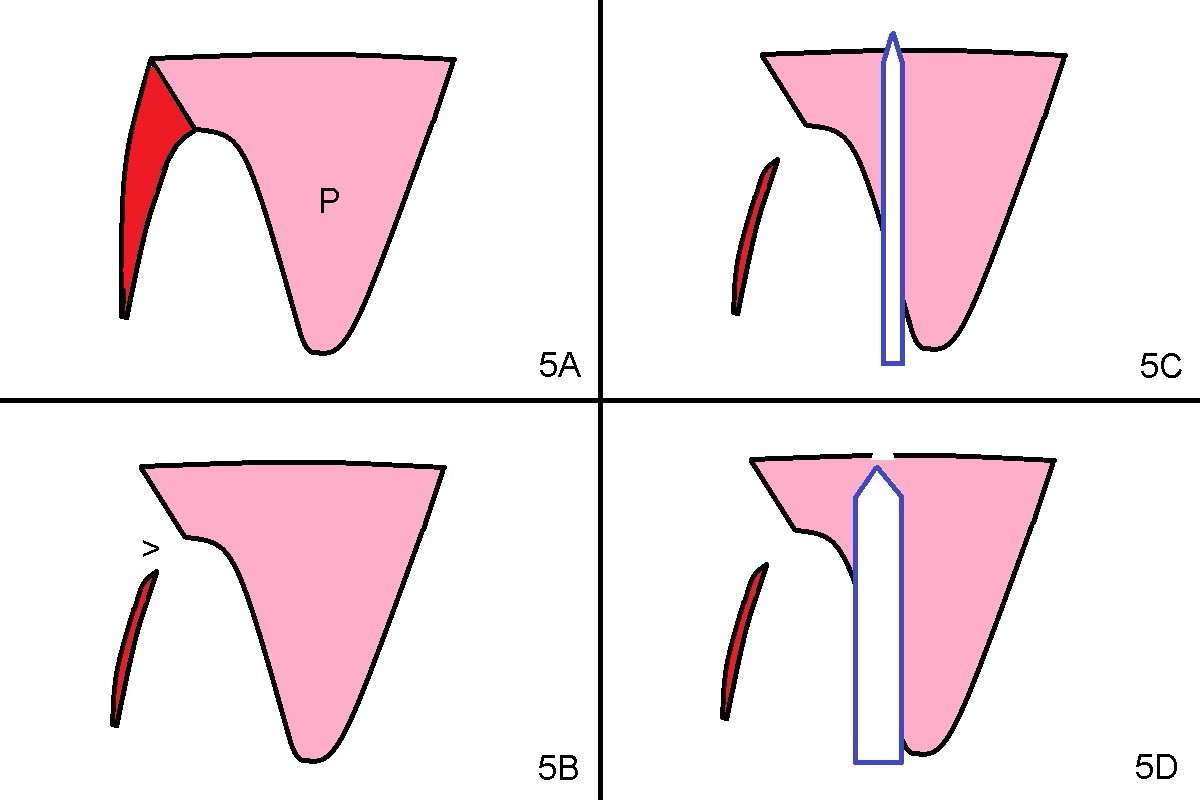
 |
Fig.5A: Cross section of a normal upper premolar socket with the palatal bone (P, pink) being larger than the buccal one (red).
The buccal plate of the socket of #4 of this case is thin and short (Fig.5B (coronal section of the socket) red area) with apical perforation (>).
Osteotomy at #4 starts with 1.6 mm drill in the palatal slope (Fig.5C blue arrow). In fact sinus perforation occurs with the 1.6 mm drill. Osteotomy increases by using Magic Drills sequentially (2.8 and 3.3 mm). A 4x11 mm dummy IBS implant is placed with insertion torque of 45 Ncm at #4 with apparently intruding into the sinus (Fig.3). When a 4.5x9 mm implant is placed, the insertion torque is actually reduced (<35 Ncm, Fig.4). As osteotomy or implant diameter enlarges, it shifts buccally with less bone contact buccally (Fig.5D, as compared to Fig.5C)). In brief, once a dummy implant has achieved a reasonably high stability, do not over seat it. A small immediate implant may have more solid bone contact.
Xin Wei, DDS, PhD, MS 1st edition 02/22/2017, last revision 09/01/2018